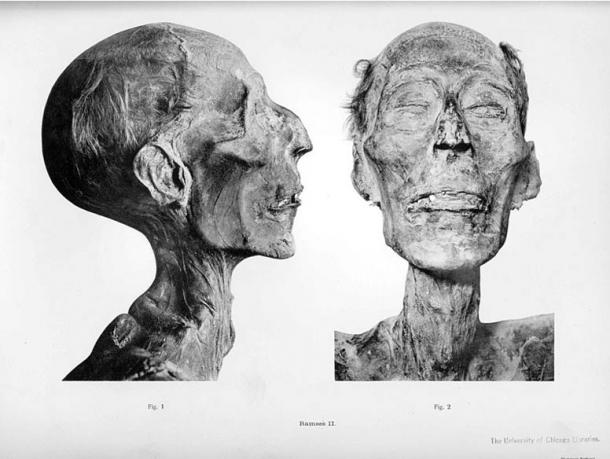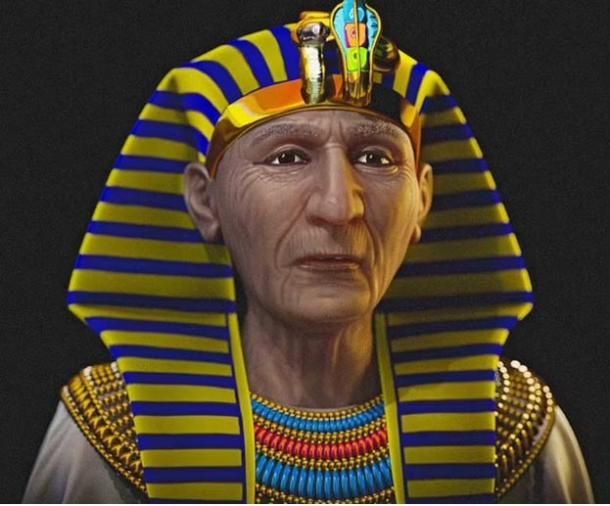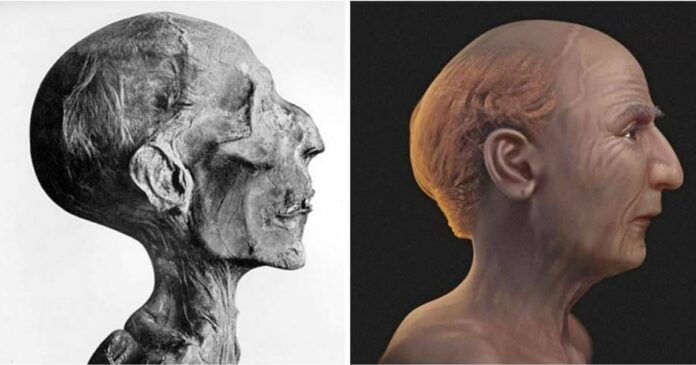The face of Ramesses II, also known as Ramesses the Great, one of ancient Egypt’s most influential pharaohs, has been meticulously reconstructed by scientists utilizing advanced 3D modeling techniques. This recreation, depicting the king’s appearance shortly before his death, portrays him as a frail yet wise elderly man, showing features that align with those seen in his colossal statues that still stand in Egypt.
Ramesses II’s Legacy
Ramesses II reigned from 1279 to 1213 BC, significantly contributing to Egypt’s architectural and military accomplishments. His reign, renowned for its grandeur, saw the construction of impressive monuments and statues, cementing his legacy as one of Egypt’s greatest rulers.

The Reconstruction Process
According to The Daily Mail, Cicero Moraes, a Brazilian graphics expert, led the reconstruction team. They used a 3D model of the king’s mummified skull, layering soft tissue and skin over the digital model to recreate Ramesses II’s likely appearance at around 90 years old, the age he is believed to have been at his death. The reconstruction revealed a frail, elderly man with a weathered face, bearing a striking resemblance to his statues, albeit with some noted differences. The statues, often idealized, depicted a more delicate forehead, pronounced lips, and a well-defined chin, features Moraes’ reconstruction found “insufficiently reliable” for an accurate representation.

Scientific and Historical Validation
The team analyzed anthropometric and DNA data from ancient Egyptian populations to ensure a realistic depiction, considering the diverse elements of the Egyptian populace. The skin color palette for the reconstruction was based on ancient Egyptian art, as the true hue of the pharaoh’s skin remains unknown. A grayscale version of the image was also produced to avoid definitive judgments about his complexion.

Comparing with Previous Reconstructions
This recent effort is not the first attempt to visualize Ramesses II. A 2022 reconstruction by Sahar Saleem of Cairo University and Caroline Wilkinson of Liverpool John Moores University presented a younger version of the pharaoh. Their project also relied on a 3D model of the skull but reversed the aging process to show his appearance at the height of his power. Saleem described the younger Ramesses as a “very handsome Egyptian person with facial features characteristic of Ramesses II – the pronounced nose, and strong jaw.”
Revealing the Wisdom in Old Age
The latest reconstruction aimed to depict the king’s aging features accurately. It highlighted pronounced veins on his forehead, signs of memory loss, and poor dental and bone health, including a significant overbite and substantial tooth wear. These details were corroborated by a 1976 study of Ramesses’ mummified remains, which had restored tissues and created new bandages. The team also employed anatomical deformation, matching the mummy’s dimensions to a living donor with a similar overbite, to interpolate the final image. This technique helped produce a life-like representation that captured the king’s wisdom and age.
Public Reaction and Future Implications
The reconstruction has attracted significant attention, sparking debates and criticisms, particularly regarding the portrayal of Ramesses II’s skin color and facial features. Moraes welcomes the discussion, emphasizing the importance of freedom of expression and the scientific process. “I am in favor of freedom of expression. I generally use it to clarify points and refute what is incoherent,” he stated.
This reconstruction adds a new dimension to our understanding of Ramesses II, offering a more personal and human connection to the ancient ruler. It bridges the gap between the grandeur of his reign and the reality of his mortality, providing a poignant reminder of the wisdom and frailty that accompany old age.
The face of Ramesses II, moments before his death, stands not just as a scientific achievement but as a powerful symbol of the enduring legacy of one of history’s greatest leaders.




